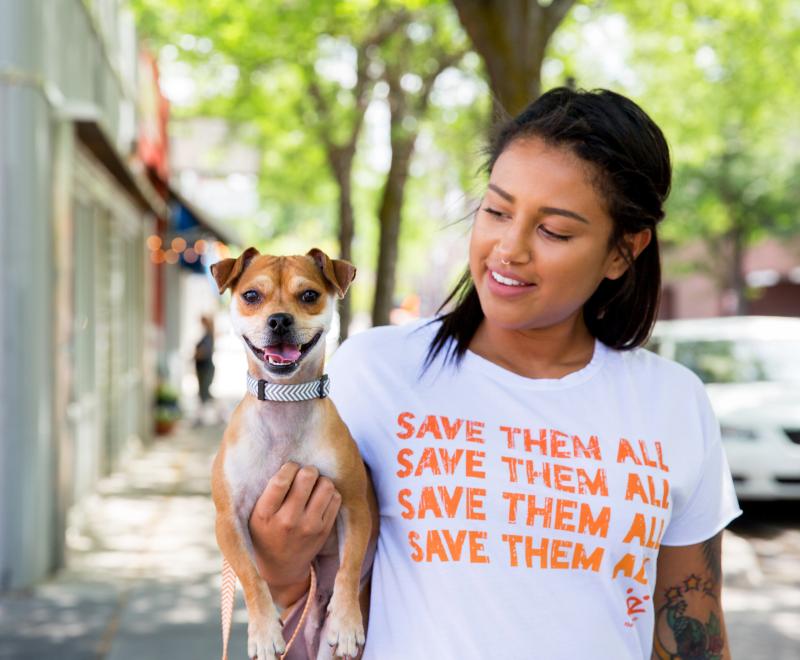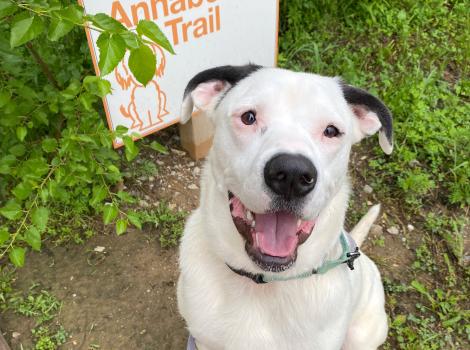Faces of No-Kill: The pets behind the philosophy

Brilliant emerald eyes that see straight into your soul. A wide, toothy grin that elicits smiles all around. Floppy ears that perk right up at the sound of a familiar voice. A petite pink nose with a healthy helping of whiskers on either side. A silver muzzle that signifies years of wisdom.
These are the faces of no-kill. They’re not what’s at stake; they’re who’s at stake. These dogs and cats are the reason Best Friends Animal Society is leading the movement to bring every shelter and every community across the country to no-kill by 2025.
What is no-kill?
No-kill means saving every dog and cat in a shelter who can be saved. It accounts for good quality of life for the animals, as well as community safety.
A 90% save rate is the benchmark for no-kill. That’s because typically the number of dogs and cats suffering from irreparable medical or behavioral issues that compromise their quality of life and prevent them from being rehomed is not more than 10% of all pets entering shelters. So shelters and communities are considered no-kill when they save 90% of the animals in their care.
In 2022, the percentage of U.S. shelters that achieved the no-kill benchmark reached an all-time high of nearly 57%. And the national save rate was at 81%. The reality of no-kill across the entire country is in sight, but now’s not the time to take our foot off the gas.

Making no-kill a reality nationwide
Bringing the country to no-kill by 2025 involves collaboration among animal shelters, rescue groups, volunteers, community members, public officials, and others; proven lifesaving programs; and data-driven decision-making. Shelters, which often lack the resources they need to save more lives, can’t do it alone. Saving the lives of dogs and cats in shelters is the responsibility of every person in every community.
The good news is no-kill efforts across the country are paying off. Since 1984 when Best Friends was founded, the number of cats and dogs killed in shelters just because they didn’t have safe places to call home has been reduced from an estimated 17 million per year to around 378,000.
But that’s still 378,000 individual lives — 378,000 faces with soulful eyes and goofy grins and expressions that can transcend any species language barrier. So as we continue to focus on the data and develop lifesaving programs, it’s just as important to remember why all of this matters: the pets behind the numbers.
Faces of No-Kill
Each animal comes with a unique personality and a special story. And that is what we intend to tell with Best Friends’ new Faces of No-Kill series. We will share special Faces of No-Kill stories that focus on pets who have become a statistic in the best way — pets who lost their homes and got the support they needed to thrive and go home again. Some simply needed a safe place to go, a bit of extra veterinary care, or behavioral help to thrive.
Here are just a few of those pets:
Dolly Parton

Dolly Parton (the cat) came to Best Friends Animal Sanctuary with a badly broken leg that the veterinary team determined would be best to amputate. Once she recovered, she moved into Cat World where she crossed paths with Scott Teigen, who was volunteering at the Sanctuary with his wife, Maree Stewart. Scott and Maree decided to host a feline for a sleepover at their Best Friends cottage, and Dolly came to mind. They weren’t intending to adopt a pet during their visit but soon realized they couldn’t leave without the sweet, playful kitty. Now, Dolly is soaking up attention in her new home and surprising her family with how easily she gets around on three legs.
Nova

At 7 years old, sweet and gentle Nova had already had multiple homes in her life when she came to Best Friends. But it must have been written in the stars for Nova and her foster caregiver, Janelle Romano, because within 24 hours of bringing her home Janelle decided to adopt the chocolate-colored pup. These days, Nova is a therapy dog visiting hospital patients and loving life as a hiking buddy with her new family.
RoiLie

An injury left RoiLie mostly paralyzed in his hind end and unable to go to the bathroom on his own. RoiLie landed at the Sanctuary, where he could have all the care and time he needed to be matched with a new family. The little pup’s big personality became nearly unstoppable when he was fitted with a mobility cart, and that zest for life is in part what drew his adopters to him. Now, they have his special care needs down to a science, and he's happily brightening their lives.
Jean Paul

A little ginger kitten named Jean Paul arrived at the Best Friends Lifesaving Center in Salt Lake City cold and unresponsive. But thanks to quick action from the veterinary team, the kitty pulled through. And within 72 hours, he was a bouncing young kitten full of life. After a stint in a foster home to grow and get stronger, Jean Paul was adopted and now gets to bounce around (and cuddle) with his new canine sibling.
Milo

Milo is a big, blocky-headed, senior pooch with an endearing curmudgeonly demeanor. However, he appeared to want to scare away every other dog he met. But staff at the Best Friends Pet Resource Center in Northwest Arkansas saw that Milo was just getting overwhelmed in certain situations. They gave him the time and training he needed to relax and understand how to navigate the world. And eventually he caught the eye of an adopter who was looking for an endearing pup just like Milo.






